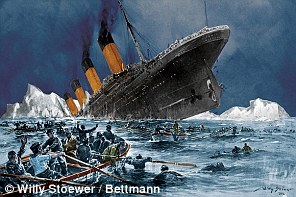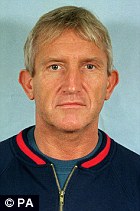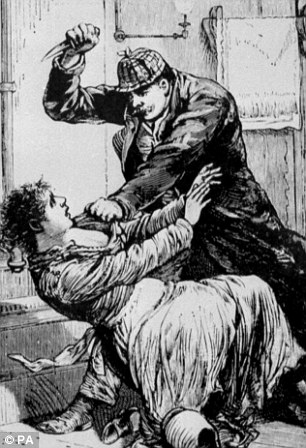1px
Member
- Dec 18, 2011
- 27
- 7
American rock singer Ronnie James Dio, who died on Sunday, popularised a hand gesture commonly used by heavy metal fans. But what does it mean? 18 May, 2010
It's a gesture commonly seen at rock concerts.
The index finger and the little finger are upright and the thumb is clasped against the two middle fingers.
Ronnie James Dio, who sang with Black Sabbath and Rainbow before forming his own band, was partly responsible for it becoming a common symbol among metal fans.
But it has other uses too, depending on the position of the thumb, and the context. Here is a round-up of some of the common meanings.
'WE ARE LOVING THIS GIG'
"Ronnie started throwing the horns shortly after replacing Ozzy Osbourne as Black Sabbath's vocalist in 1979," says Simon Young, news editor of heavy metal magazine Kerrang!.
"Many metal fans began to reciprocate the gesture and along with headbanging, it became synonymous with metal."
Dio wasn't the first, says Young. In the 1960s, there had been Coven frontman Jinx Dawson, and the cartoon version of John Lennon on the cover of The Beatles' Yellow Submarine was seen using it too. But it really took off from Dio.
It has been misinterpreted as a sign of allegiance to the devil, because the shape of the fingers have been associated with 666, the number of the beast, says Young.
But Dio, says Young, explained that he was taught the so-called corna sign by his Italian grandmother, as a way to scare off the "evil eye", a look which is said to cause bad luck. It's like knocking on wood for superstitious purposes (more on this below).
Fans copied Dio because they thought it looked cool, and it became a sign of appreciation at gigs. But it has more recently crossed over into mainstream youth culture, says Young.
"Rihanna, Britney Spears and Avril Lavigne have all done it - perhaps they're all secret metal fans - but it has led to several internet groups forming in protest over the 'egregious overuse and inappropriate use' of throwing the horns. Quite right. Leave it to the metal fans."
WARDING OFF THE EVIL EYE
When Dio's Italian grandmother taught him the corna sign, she was drawing on a much older superstition.
Bram Stoker mentioned it in his novel Dracula, published in 1897. In the first chapter, protagonist Jonathan Harker notes the following in his journal while in Eastern Europe's Carpathian Mountains:
"When we started, the crowd round the inn door, which had by this time swelled to a considerable size, all made the sign of the cross and pointed two fingers towards me. With some difficulty I got a fellow-passenger to tell me what they meant; he would not answer at first, but on learning that I was English, he explained that it was a charm or guard against the evil eye."
This superstitious belief is especially common in Italy, but it is also shared in other countries.
In southern Italy, it can also be directed at a man whose wife is thought to be unfaithful, so it should be exercised with great care.
'GO, THE TEXAN LONGHORNS'
The slogan of the University of Texas is "Hook 'em, horns" and the hand sign that illustrates this motto is the same as the one used by heavy metal fans.
It is intended to symbolise the head and horns of the university mascot, the longhorn, and has been used since the 1950s.
Fans use it as a greeting or just to emphasise their Texan identity, a demonstration most famously seen in recent years by George W Bush.
His wife Laura and daughters were also fans.
'I LOVE YOU'
With the thumb sticking out, it has a different meaning entirely.
"It is the American sign for 'I love you'," says Sarah Murray of the British Deaf Association.
"It would probably be recognised by people here [in the UK] but you wouldn't see it often used."
American politicians like Barack Obama, Bill Clinton and Dick Cheney have been photographed using it in the same way, although some believe that Jimmy Carter was its first exponent when running for president in the 1970s.
When the Obamas use it with their thumb sticking out, it is different from the specifically Texan use by George Bush, says Trevor McCrisken, a professor in US politics at the University of Warwick.
"They want to show that they care about people that need to use sign language," he says. "If you're at a political event in the US, there will be a couple of people down the front signing to the audience, so they're more careful [than in the UK] to ensure that everyone with special needs is catered for."
'HANG LOOSE'
At his presidential inauguration, President Obama was seen doing what is known as the "shaka" greeting, which has the thumb and little finger extended.
It is also exercised by Brazilian footballer Ronaldhinho as part of his goal scoring celebrations.
In Hawaii, where the president was born, the sign conveys affection or "aloha".
It has been adopted by the wider surfing community as a greeting meaning "hi", "cool" or "hang loose".

| THE ANSWER It has different meanings, depending on context and position of fingers: For Dio, it was a superstitious way to ward off evil At heavy metal gigs, fans use it to show their appreciation For Texans like George W Bush, it is a show of support for the state university In American sign language it means 'I love you' Bill Clinton and Barack Obama have used it in this way President Obama also does a Hawaiian 'aloha' greeting 
Heavy metal singer Dio dies at 67 |
The index finger and the little finger are upright and the thumb is clasped against the two middle fingers.
Ronnie James Dio, who sang with Black Sabbath and Rainbow before forming his own band, was partly responsible for it becoming a common symbol among metal fans.
But it has other uses too, depending on the position of the thumb, and the context. Here is a round-up of some of the common meanings.
'WE ARE LOVING THIS GIG'
"Ronnie started throwing the horns shortly after replacing Ozzy Osbourne as Black Sabbath's vocalist in 1979," says Simon Young, news editor of heavy metal magazine Kerrang!.
"Many metal fans began to reciprocate the gesture and along with headbanging, it became synonymous with metal."
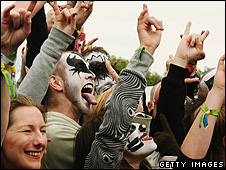
|
It has been misinterpreted as a sign of allegiance to the devil, because the shape of the fingers have been associated with 666, the number of the beast, says Young.
But Dio, says Young, explained that he was taught the so-called corna sign by his Italian grandmother, as a way to scare off the "evil eye", a look which is said to cause bad luck. It's like knocking on wood for superstitious purposes (more on this below).
Fans copied Dio because they thought it looked cool, and it became a sign of appreciation at gigs. But it has more recently crossed over into mainstream youth culture, says Young.
"Rihanna, Britney Spears and Avril Lavigne have all done it - perhaps they're all secret metal fans - but it has led to several internet groups forming in protest over the 'egregious overuse and inappropriate use' of throwing the horns. Quite right. Leave it to the metal fans."
WARDING OFF THE EVIL EYE
When Dio's Italian grandmother taught him the corna sign, she was drawing on a much older superstition.

| WHO, WHAT, WHY?
A regular part of the BBC News Magazine, Who, What, Why? aims to answer some of the questions behind the headlines |
"When we started, the crowd round the inn door, which had by this time swelled to a considerable size, all made the sign of the cross and pointed two fingers towards me. With some difficulty I got a fellow-passenger to tell me what they meant; he would not answer at first, but on learning that I was English, he explained that it was a charm or guard against the evil eye."
This superstitious belief is especially common in Italy, but it is also shared in other countries.
In southern Italy, it can also be directed at a man whose wife is thought to be unfaithful, so it should be exercised with great care.
'GO, THE TEXAN LONGHORNS'
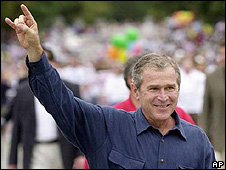
|
It is intended to symbolise the head and horns of the university mascot, the longhorn, and has been used since the 1950s.
Fans use it as a greeting or just to emphasise their Texan identity, a demonstration most famously seen in recent years by George W Bush.
His wife Laura and daughters were also fans.
'I LOVE YOU'
With the thumb sticking out, it has a different meaning entirely.
"It is the American sign for 'I love you'," says Sarah Murray of the British Deaf Association.
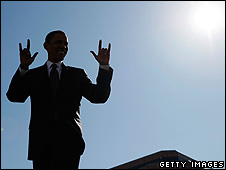
|
American politicians like Barack Obama, Bill Clinton and Dick Cheney have been photographed using it in the same way, although some believe that Jimmy Carter was its first exponent when running for president in the 1970s.
When the Obamas use it with their thumb sticking out, it is different from the specifically Texan use by George Bush, says Trevor McCrisken, a professor in US politics at the University of Warwick.
"They want to show that they care about people that need to use sign language," he says. "If you're at a political event in the US, there will be a couple of people down the front signing to the audience, so they're more careful [than in the UK] to ensure that everyone with special needs is catered for."
'HANG LOOSE'
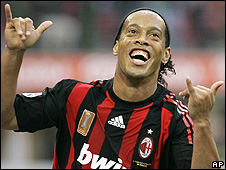
|
It is also exercised by Brazilian footballer Ronaldhinho as part of his goal scoring celebrations.
In Hawaii, where the president was born, the sign conveys affection or "aloha".
It has been adopted by the wider surfing community as a greeting meaning "hi", "cool" or "hang loose".


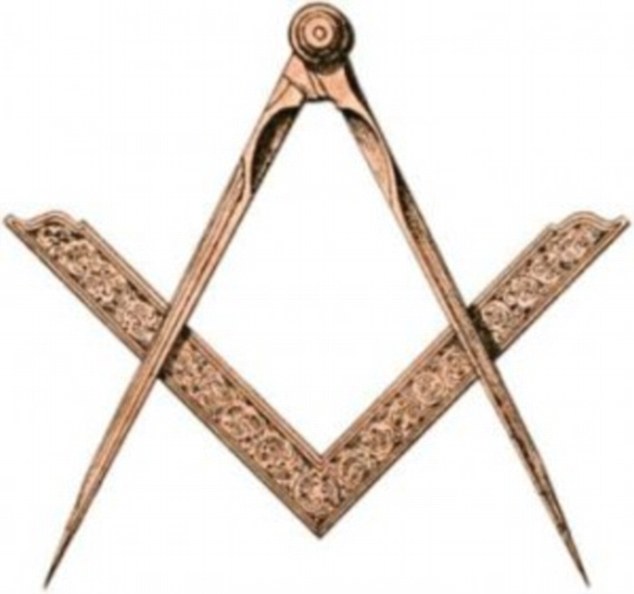
 Freemasons fixed inquiry into Titanic to protect...
Freemasons fixed inquiry into Titanic to protect...  Jack the Ripper was an 'obscure singer who was protected by...
Jack the Ripper was an 'obscure singer who was protected by... 